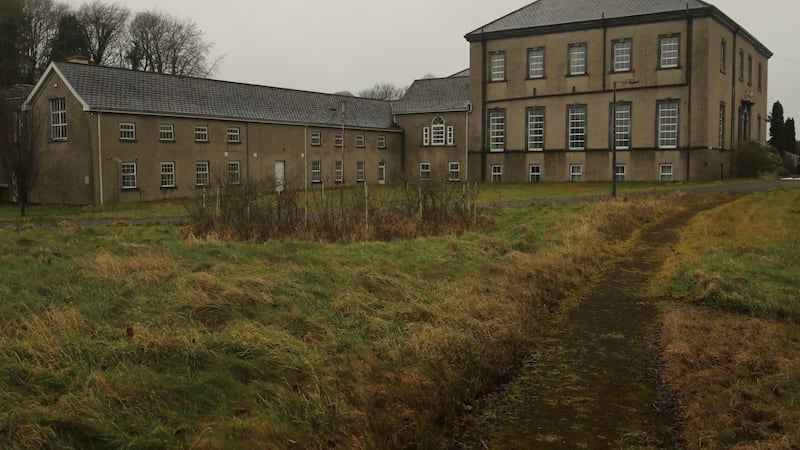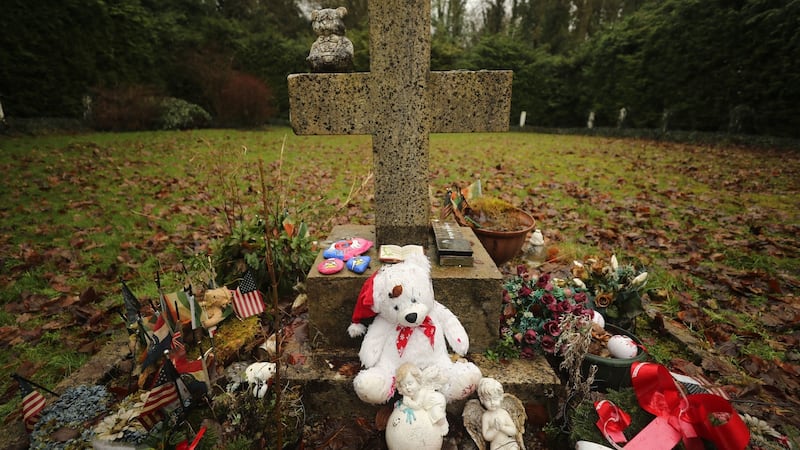Nine thousand children died in Ireland’s Mother and Baby Homes between 1922 and 1998, including three-quarters of all the children born, or admitted to one home in one year during the second World War.
In all, 15 per cent of the approximately 57,000 children who were in the 18 institutions investigated by the Mother and Baby Homes Commission died during their time there.
The “very high rate of infant mortality” during the first year of the babies’ lives in the institutions “is probably the most disquieting feature of these institutions,” the Commission report, published on Tuesday, found.
"In the years 1945-46, the death rate among infants" in the homes "was almost twice that of the national average for 'illegitimate' children," it said. The term "illegitimate", referring to children born to unmarried mothers, was used in Ireland until 1987.
In Bessborough in Cork, 75.19 per cent of all babies admitted to, or born in the home during the course of 1943 died in infancy, according to the report.
“Infant mortality rates fell to just over 12 per cent in 1946 and continued a downward trend. By 1952, the infant mortality rate [there] stood at 2.15 per cent,” the report states.

The highest mortality rate of all of the homes was in the Sean Ross Home (1931 - 1969) at Roscrea, Co Tipperary where 1,090 infants out of 6,079 died – 79 per cent of them between 1932 and 1947.
The report also found that “Sean Ross had a much higher incidence of mortality from major infectious diseases, such as diphtheria and typhoid, than any other mother and baby home.”
It attributed this to “the transfer of mothers to the local fever hospital, where they worked as unpaid nurses, and their return to Sean Ross, where they appear to have transmitted infection to their child.”
In a damning conclusion, the report found the homes “did not save” the lives of “illegitimate” children in the years before 1960; in fact “they appear to have significantly reduced their prospects of survival.”
The high infant mortality rates were not hidden but “were known to local and national authorities at the time and were recorded in official publications.”
The first report of the registrar general of the Irish Free State highlighted the appalling excess mortality of children born to unmarried mothers, the Commission found.
Subsequently, a succession of Department of Local Government and Public Health reports noted that fact, too, but “there is little evidence that politicians or the public were concerned about these children.”
The Commission said “no publicity was given to the fact that in some years during the 1930s and 1940s over 40 per cent of ‘illegitimate’ children were dying before their first birthday” in the homes.

"The high level of infant mortality in the Tuam Children's Home did not feature at meetings of Galway County Council, though Tuam was under the control of the local authority and it held its meetings in the Children's Home." There were "many references" to the Tuam Home in meetings of the council but "none refer to the health or mortality of the children".
Between 1921 and 1961 (when it closed), 978 children died in the Tuam Home, 80 per cent under one year, 67 per cent between one and six months. Three-quarters died in the 1930s and 1940s, with 1943 to 1947 the worst years.
It was similar at the Protestant-run Bethany Home in Dublin where the "management and board could describe health in the home as 'excellent', despite the minutes of the same meeting recording the deaths of a number of children." A total 262 children associated with Bethany (which existed from 1922 to 1971) died, 61 per cent between 1937 and 1947, 62 per cent in 1943.
In Cork, 923 children associated with the Bessborough Mother and Baby Home (1922 to 1998) died there. In 1934 it had the highest recorded infant mortality rate of all such homes and in 1943, three in four (75 per cent) children born there died.
Attempts by the Department of Local Government and Public Health (DLGPH) to have something done about this that year prompted one of the rare interventions by a senior Catholic cleric in the running of any of the homes.
While the report found “no evidence that the Catholic hierarchy played a role in the day-to-day running of mother and baby homes” there was an exception in this instance.
Bessborough was run by the Sisters of the Sacred Hearts of Jesus and Mary and when the department “sought a change of superior in Bessborough because of the appallingly high death rate, he [Catholic Bishop of Cork Dr Daniel Cohalan] denounced the request. The replacement of the Bessborough superior was delayed for four years after the department requested it, and many infants died during that time. It seems probable that the bishop’s intervention was elicited by the congregation.”
In general the report found that the major causes of infant mortality in the homes were respiratory infections and gastroenteritis, while “public attention has focused on marasmus [malnutrition]” suggesting “wilful neglect”. However, it said that “the term marasmus is best seen as indicating that a child was failing to thrive, but medical experts suggest that this was due to an underlying, undiagnosed medical condition.”
The report noted how, in wartime Birmingham, effective measures were introduced there to reduce infant mortality among “illegitimate” children.
In Ireland “such action required public acknowledgement that these children existed and a commitment to promoting their well-being. There is little evidence of similar concerns in Irish society; the children of Irish unmarried mothers were hidden from public gaze.”
The report said “infant mortality in general remained high in Ireland until the late 1940s, especially in the inner cities, yet there was no national outcry about this, except among a small number of medical professionals.”
The report found no single explanation for the appalling level of infant mortality in Irish mother and baby homes. Stress on the mothers, as well as a lack of ante-natal care were factors, it suggested. Most of the mothers “were poor” and “their diet during pregnancy would have lacked essential nutrients, and this may have been exacerbated by efforts to conceal the pregnancy.” It was also the case the “many women were admitted in the final weeks of pregnancy, some arrived following the birth of their child.”
The report added that in the homes “overcrowding probably contributed to excess infant mortality.” The “large size of most of the homes, the large infant nurseries, with cots crammed together – sometimes only one foot apart – served to spread infection. There was an absence of infection control; a failure to isolate mothers and children who were being admitted, until they were proven not to carry an infectious disease.”
It also said “there would also appear to have been a failure to implement appropriate standards of hygiene in the homes and to educate mothers about this.”
Where burial records were concerned there are none for the children who died at the Tuam Home and the report concluded it was likely that most of those children were “buried inappropriately in the grounds of the institution.”
It was the same for Bessborough, where "the burial location of the majority of children who died there is still unknown." Nor was a register of infant burials kept at Sean Ross, where the Commission established that "the coffined remains of some children under the age of one are buried there." Again at Castlepollard there was no register of infant burials but it seemed likely "that most of the children who died are buried in the designated burial ground."
However the burial of those children who died at the Pelletstown home in Dublin "are properly recorded in Glasnevin Cemetery" while "the burials of Bethany children are properly recorded in Mount Jerome cemetery."
From the late 1940s infant mortality rates in the homes and Irish society generally began to decline significantly. This, the report says, “was due to a variety of factors: antibiotics, immunisation programmes, improved quality of milk, isolation, and better sanitisation and housing”.
In the homes there was evidence “of additional bathrooms and toilets, and it is possible that overall hygiene practices may have improved.” In particular it found that “new medical officers were appointed to both Bessborough and Sean Ross.”
Overall the report found that “the vast majority of children in the institutions were ‘illegitimate’ and, because of this, suffered discrimination for most of their lives.” This “was true of all ‘illegitimate’ children,” the report said.
It also found that “the vast majority of children born in the institutions have no memory of their time there but some stayed in the institutions after their mothers left and a small number were in institutions until the age of seven.”
On vaccine trials the Commission identified “seven vaccine trials which took place at the institutions under investigation in the period 1934-1973 and has identified a number of the children involved.”
It found “there was not compliance with the relevant regulatory and ethical standards of the time as consent was not obtained from either the mothers of the children or their guardians and the necessary licences were not in place.” It concluded, however, that “there is no evidence of injury to the children involved as a result of the vaccines.”










